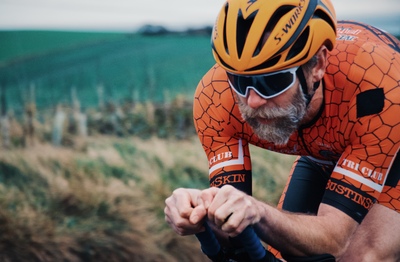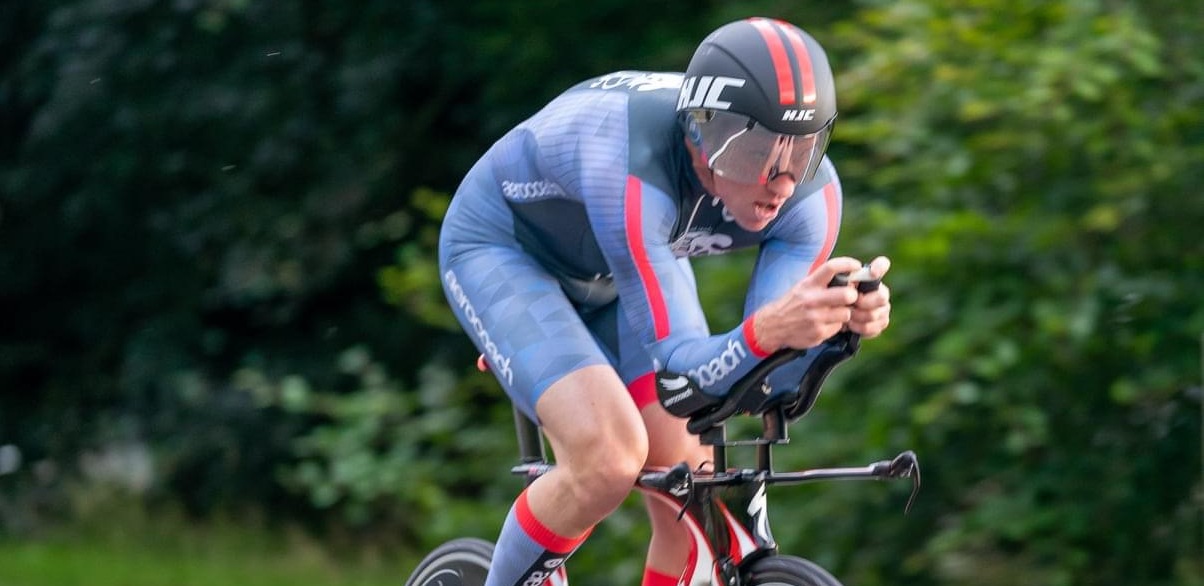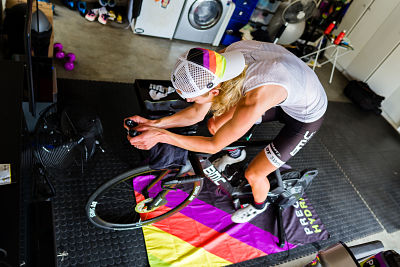When I was at school, the whole concept of defining exercise intensity fell into one of two perceived training zones; either “not trying hard enough slacker” or my teacher’s seemingly preferred “do not resuscitate”.
Back then, training just seemed to be a case of doing as much as you could and letting the chips (or bodies) fall wherever they landed. As my interest in sport progressed from merely surviving PE lessons to trying to perform in a range of sports, organising my training became increasingly important.
What are training zones?
When you ask your sporty friends what they’re doing and they then tell you “zone 2”, “level 5” or “VO₂ max intervals”, it all gets rather confusing and you feel you need an enigma codebreaker to help you understand what the hell is going on.
Welcome to the murky waters of training zones. In essence, this is how we define our training session intensities into a series of bands or zones. The sheer diversity of training zone systems can seem quite confusing.
Prior to tools such as heart rate monitors or power meters becoming available, sport was pretty much regulated by our ‘perceived exertion’ (i.e. how hard do we feel we are working), measured distances or the humble stopwatch.
Perceived exertion training zones were defined by Swedish psychologist Gunnar Borg in his seminal paper ‘Psychophysical bases of perceived exertion’ way back in 1982. His system ran from a self-diagnosed 10-point scale ranging from a workout intensity of ‘no exertion at all’ through to ‘maximal’.

But the more recent adoption of power meters and HR monitors as measuring tools has meant that some training zone systems have provided more specific or numerous levels of zones. For example, in the 2006 book ‘Training & Racing with a Power Meter’ by Hunter Allen and Dr Andy Coggan, they defined a seven zone system ranging from ‘active recovery’ up to ‘neuromuscular power’.
| Level | Name | Average Power (% of threshold power) | Average HR (% of threshold HR) |
|---|---|---|---|
| 1 | Active recovery | <55% | <68% |
| 2 | Endurance | 56-75% | 69-83% |
| 3 | Tempo | 69-90% | 84-94% |
| 4 | Lactate threshold | 91-105% | 95-105% |
| 5 | VO₂ Max | 106-120% | >106% |
| 6 | Anaerobic capacity | >121% | N/A |
| 7 | Neuromuscular power | N/A | N/A |
Whilst these modern devices are powerful tools, if you don’t quantify or qualify what you’re doing, they’re basically a random bingo number caller or a rather expensive speedometer.
How to establish your training zones
To establish the right training zones for you, the first thing to understand is that these will be unique to both yourself and your current state of fitness.
In the past, you may have seen some formulas such as ‘220 minus your age’ to help estimate your training zones, but this ‘one size fits all’ approach won’t work because it provides such a broad estimation. As a result, you may find yourself working too hard when you should be taking it easy or not hard enough when you should.
Your next question may well be ‘what system is best then?’. Frustratingly, the answer is, 'possibly any of them'...
The reason I say that is because the training zones don’t make you the better athlete. It’s the training itself that will make the difference, so focus on ensuring it’s specific to your event goals and progressive enough to cause physiological adaptations.
It’s not about working as hard as you can all the time by doing a ‘Spinal Tap’ and ‘taking it to 11’. As a result, it’s better to choose a system that allows you to test yourself and then to set the training zones based upon its results.
Firstly, I'd recommend that you determine what device or method you’re going to use to monitor your training intensity, by doing your research and identifying the training system that you want to use.
You can then perform a fitness testing protocol that you do every 4-8 weeks to check your zones are still in the right place or to monitor changes in your fitness.
This test can be conducted inside or outside, online or in reality, but ensure that you always do it the same way, in the same place and with the same preparation. That way the test is more reliable, comparable and accurate. As an aside, if you see some weird guy on a quiet road, weaving around like a drunk and hanging off his aerobars like a trapeze artist every six weeks, it’s probably me...

Something else I learned to embrace relatively recently with respect to training zones is that training intensity exists on a continuum. This is a pretty important point because training adaptations don’t suddenly stop as you move from one training zone to another. They change in their value and contribution but they don’t just... end.
Put simply, if you stray from zones three to four in your workout, you don’t suddenly explode in a mushroom cloud of lactic acid, nor do you suddenly destroy your winter conditioning or blood capillaries overnight if you go for unparalleled glory during your Alpe de Zwift ascent. This is probably why the Allen/Coggan book I mentioned earlier doesn’t even refer to training intensity with ‘zones’ but instead defines them as ‘levels’. It’s more progressive in nature.
Granted, there are a couple of physiological milestones I’ll mention next but when you see an intensity organisation with a number of zones greater than three, this is often merely an act of logistical assistance, not that your body goes through seven or more separate phases (although my face does go through seven shades of colour - go green and it’s either all over or you’re the Hulk).
Should you be using 80/20 polarised training?
Granted this can seem pretty complicated when you’re trying to prescribe training based upon umpteen levels of intensity. I suspect this issue is partly due to the rise in popularity of Dr Stephen Seiler's Polarised Training method.
This training system was based upon Seiler and Kjerland's retrospective assessment of elite athletes' training practises. In many ways, what was a study that identified a training modality (i.e. how we train) has taken on a life of its own - virtually becoming a training religion in its own right.
In my view, this is wrong because it glosses over the fundamental understanding that training should be primarily specific to your goal or physiological needs, not just following a rule blindly in the hope that it will be a ‘magic bullet’.
However, my feelings aside on such issues, the reason I believe polarised has gained so much traction is because it’s so simple and easy for people to understand and manage. This method breaks training intensity into just three zones and Seiler’s work broadly advocates that an athlete should train very easy for 80% of the training sessions and work hard for the other 20% of them.

A common misconception by other authors is that the 80/20 ratio is split by exercise duration or intensity distribution, but Seiler has stated that this division is by session number (so that if you do five training sessions a week, one of those is performed at high intensity with the remaining four left at low intensity).
The three zones of this system are merely separated from each other by two physiological milestones that do exist in the scientific literature and often form the basis of athlete testing in the lab.
- The divide between zones 1 and 2 is known as ‘LT1’ or aerobic threshold. LT1 is defined as the lowest exercise intensity at which there’s a sustained increase in blood lactate concentration above your normal resting values.
- The boundary between zones 2 and 3 are separated by ‘LT2’ or the maximal lactate steady state (MLSS).
Whilst the test methods may not be easy or accessible to everyone, the 80/20 system is pretty simple to follow once you know where the boundaries are. The other reason I believe this method is currently proving so popular is because of its reliance on low intensity exercise reducing the risks of athletes overtraining.
Alternatively, training systems that possess more zones will potentially see athletes trying to cover too many bases, too often, and ultimately work at a higher intensity than they can handle.
Regardless of what the best method is, I know I went faster than ever on the bike last year at age 47 when I experimented with how little higher intensity work I actually needed. It turned out to be far less and far simpler than I thought.
The bottom line here is that it’s wise to use a training zone system that’s easy to measure, easy to test and easy to track changes. Keep tabs on yourself and retest every 4-8 weeks using the same methods and protocols. And crucially, don’t lose sight of your goals and the specificity required to achieve them.
